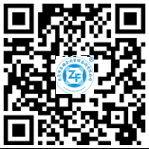Contact Us
Contact: Miss Luo
Phone:13798904733
18928298220
Tel:0769-22805501
QQ:691743147
Eamil:dgzf@dgzf0769.com
Address:Room 104, Building 6, Haiyi Palace Shangdu, No. 66 Hujing Avenue, Houjie Town, Dongguan City, Guangdong Province
Abstract: According to the latest news on the official website of the International Organization for Standardization (ISO), the new standard ISO 13485:2016 for medical device quality management system was officially released on March 1, 2016.
The full name of ISO 13485 is "Medical Devices-Quality Management System-Requirements for Regulations", which is formulated by ISO/TC 210-Technical Committee for Standardization of Medical Device Quality Management and General Requirements, and runs through product establishment, design and development, sample preparation, registration Every link in the whole life cycle of medical devices such as testing, clinical trials, product registration, production, sales, and use, so organizations should attach great importance to it.
The new ISO 13485:2016 standard introduces and reinforces a number of medical device industry best practices. Compatible with the requirements of national medical device regulations including US FDA QSR 820, Japan J-Pal Regulation 169, Brazil GMP, EU MDR & IVDR, Canada, Australia and China CFDA "Quality Management Practice". In addition, the new version better integrates system and regulatory supervision and product registration, which can help enterprises improve their independent research and development capabilities and improve their competitiveness.
【ISO 13485:2016 main changes】
The new ISO 13485 version has added many new requirements, which better combine the system and regulations and the requirements of product registration, which can better help enterprises to manage and improve their quality. The main changes are as follows:
Greater emphasis on regulatory requirements
Greater emphasis on risk management
Introduce new usability and software application requirements
Refinement of the control of the design process
Clarified change control requirements
Strengthen supplier control requirements
Clear traceability (UDI) requirements and purpose
Increased requirements for feedback and complaint handling

 简体中文
简体中文
